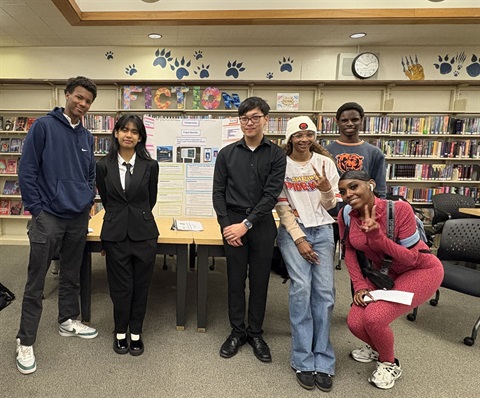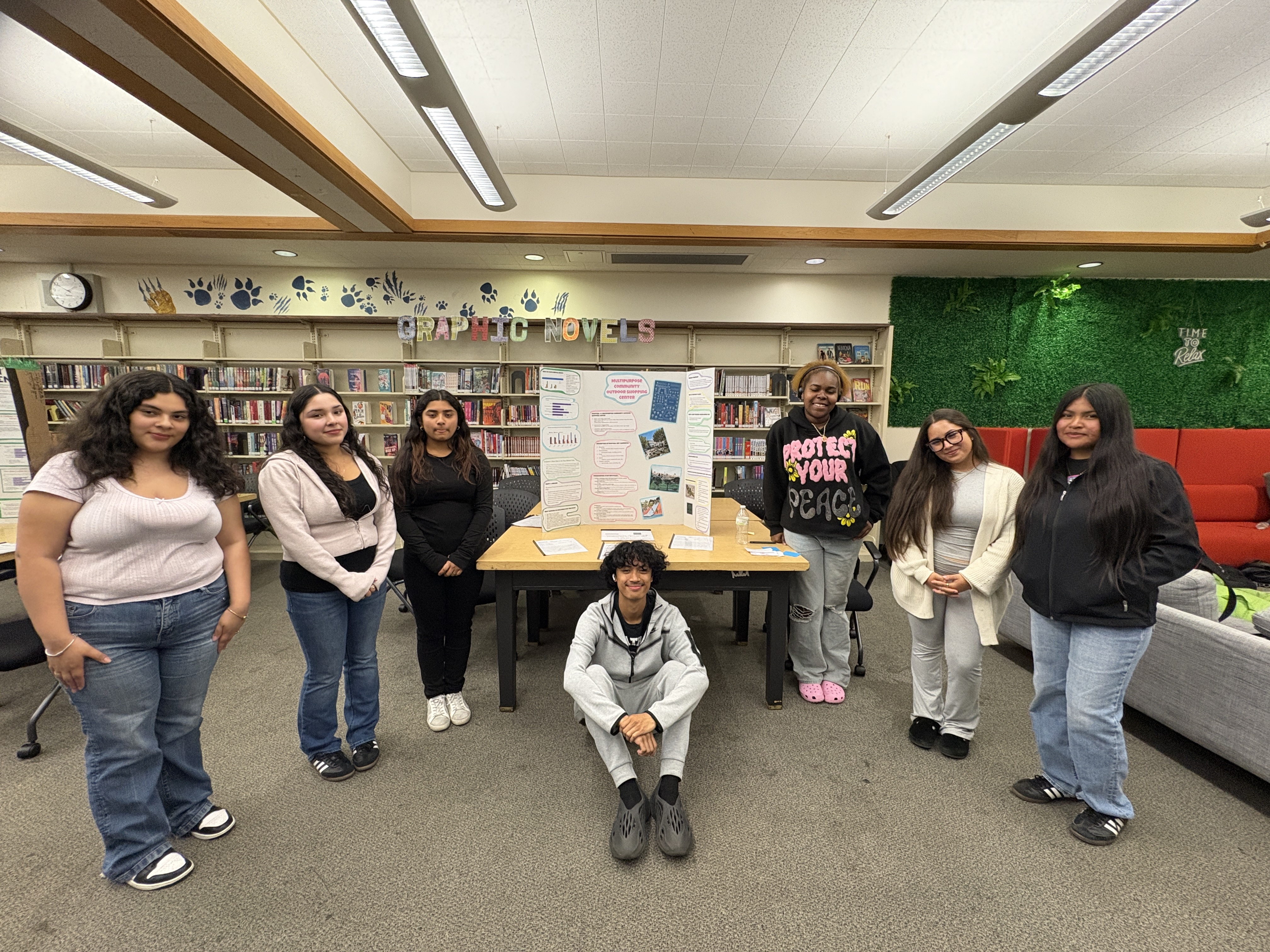Oakland Youth Share Ideas to Transform Their Neighborhoods
Published on September 25, 2025

This article was written by Vy Truong, City of Oakland Strategic Planning & Communication Intern.
Oakland youth are making it clear that the best way that the City can support them is to invest in safe, walkable, transit-accessible spaces for youth to connect with each other and their communities. In May of this year, 45 juniors in Oakland High’s Law and Social Justice Pathway (LSJ), presented to City staff on ways to support a joyful and just Oakland for Oakland’s youth. The students, led by teacher Mallory Logan, engaged in a comprehensive project to weigh in on Oakland’s 2045 General Plan Update. Using surveys, interviews, research, and data analysis, these high schoolers create policy proposals on how improvements to local amenities, increased maintenance of green spaces, and enhanced public transportation can have a notable impact on how youth interact and thrive in our city.

Students developed a community survey that received 319 responses, with over 80% of respondents being current Oakland Unified School District (OUSD) students and 82% of respondents were 14-17 years old. Respondents answered questions about their experiences taking public transportation, how they connect with their peers, and the types of community facilities they want in their neighborhood. One of the key themes that emerged from their findings is that Oakland youth do not have enough public spaces to hang out with each other and that feeds into increased social isolation and poor mental health for young people. Nearly three-quarters of survey respondents said that while public spaces exist in their neighborhoods, there are either not enough options or only a few spaces they would willingly visit. Only 7% of respondents agreed that there were safe, clean options for teenagers to hang out in their neighborhood.
The 2045 Oakland General Plan Update aims to tackle these challenges through a process centered on community-driven change and the inclusion of historically underrepresented voices in the urban planning process. For many, the General Plan represents an opportunity to reflect years of advocacy, resilience, and persistent calls for change towards building an equitable future for every resident, regardless of their zip code. Oakland youth have spoken up, sharing the kind of community they hope to build, and here is what they have to say.
Open Space for a Better Oakland
Oakland youth voiced that the General Plan Update should include teen-focused elements that prioritize spaces for youth to build community and connect with each other. Data from the survey showed that youth’s biggest priorities for parks and outdoor spaces were improving the cleanliness of parks and public restrooms, and having more food options and vendors in parks.
Students have proposed revitalizing existing public spaces and establishing community gardens located closer to commuter zones such as schools and transit hubs to make them more accessible. Another suggestion was to organize regular park clean-ups by offering enrichment classes and volunteer opportunities where people can learn how to care for shared environments. These proposals aim to foster community building, promote wellness, and restore the image of public spaces in underserved areas of East and West Oakland.
Addressing Youth Social Isolation through Community Facilities
Safety in public spaces and the need to design spaces that foster in-person social interactions is a major concern for Oakland youth. With the rise of technology and social media, many students are choosing to stay home and socialize online. Students shared that while social media connects people virtually, it also contributes to rising levels of self-isolation and declining mental health among youth due to less frequent in-person interactions.
To address this, students have proposed the creation of a multipurpose community outdoor shopping center catered towards providing safe spaces for people to gather and support local small businesses. The center would prioritize vendors offering healthy food and wellness service and ideally be located in populated areas near schools.
Bringing this vision to life would require city funding and collaboration with urban planners to determine the best location and logistics to facilitate this development. For students, this proposal represents not just another city project, but an opportunity to build community.
Transportation for Youth in Oakland
In their proposals, students highlighted how years of disinvestment in public transportation, particularly in low income neighborhoods, have left many Oakland residents with few reliable transit options. Gentrification has pushed long-time residents from central areas with access to public transit, while past policy decisions have resulted in infrequent bus services, poor lighting, inadequate maintenance, and minimal security presence. Even when buses are available, youth report feeling unsafe while waiting for or using public transit.
Results from the students’ community survey showed that 64% of respondents use cars as their primary mode of transportation. Only 26% of them primarily use the bus. The top three concerns students reported about the bus system were long wait times, overcrowding, and safety.
To address ridership experience, students proposed eco-friendly initiatives which include solar-powered lighting with security cameras at bus stops, digital information boards to provide consistent updates, and an establishment of a regular cleaning maintenance schedule. Implementation of these initiatives will work to address safety over better-lit bus stops, anxiety over wait time, understanding of the transit system, and a cleaner transit experience. Increased access to safer public transportation will offer future opportunities to expand these services to further under-served routes.
"Working with the Oakland General Plan has been an amazing experience for my students and myself! This project has been a really cool way for students to see and participate in the policy process in Oakland. Because of our partnership, students are able to research real-world problems, survey their peers on the issues, and advocate for change in their communities. This type of learning breaks down the barriers between the classroom and community, and targets the untapped potential of our students to be real stakeholders in their communities." - Mallory Logan, Social Studies Teacher, Oakland High School
What’s Next for Oakland: The General Plan Update (GPU)
On July 30, 2025, the City of Oakland released Oakland for All:Options For How We Stabilize and Grow. This report outlines three big-picture ideas for what Oakland could look like in the future. This report takes into consideration feedback that residents have been sharing over the last four years.
The Options report includes land use and transportation strategies that invest in the well-being of local residents and plans for future jobs and housing growth in Oakland. Share your feedback on the Options by completing the Options Survey, attending community events, or emailing generalplan@oaklandca.gov. The public comment period was open from July 30 to September 24. Feedback received will inform the development of the Preferred Option, which staff will share with the public and take to City Council in early 2026. This is a huge opportunity for residents to share their voices and ensure that the General Plan truly reflects the needs and priorities of Oakland’s communities.